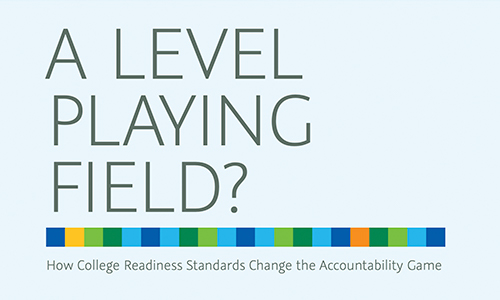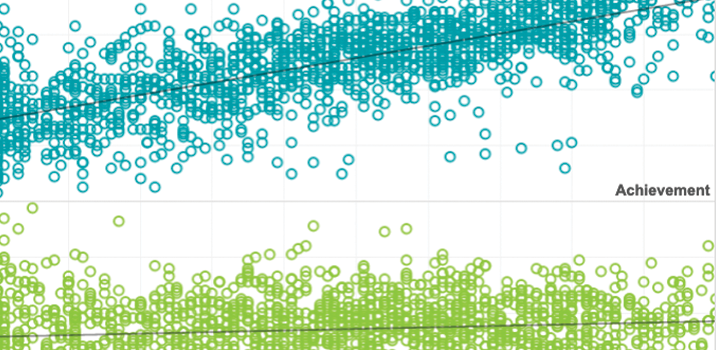
Description
The MAP Growth theory of action describes key features of MAP Growth and its position in a comprehensive assessment system. The basic premise of the theory of action is that all students learn when MAP Growth is situated in a comprehensive assessment system and used for its intended purposes to yield information about student learning and enable educators to make data-informed decisions about curriculum and instruction. The infographic illustrates the components of the MAP Growth theory of action, shedding light on the connectedness of the parts and the claims that are central to the validity argument.
See MoreTopics: Equity, Measurement & scaling, Test design
Related Topics



Do high flyers maintain their altitude?
In the visualizations in this exhibit, you can compare the performance and growth of various groups of high achievers to that of their peers over multiple years.
By: Yun Xiang, Michael Dahlin, John Cronin, Robert Theaker, Sarah Durant
Topics: Equity, High-growth schools & practices


For decades, researchers and practitioners have made a great deal of effort to study a variety of methods to increase parameter accuracy, but only recently can researchers start focusing on improving parameter estimations by using a joint model that could incorporate RT and students information as CI.
By: Shudong Wang, Hong Jiao
Topics: Test design


A level playing field: College readiness standards
Some of our assumptions about the growth and performance of students from high-poverty schools relative to their peers from wealthier schools may be challenged in this data gallery, where you can explore how school poverty level interacts with student growth, college readiness, and college access.
By: Michael Dahlin, Beth Tarasawa
Topics: Equity, College & career readiness


An investigation of examinee test-taking effort on a large-scale assessment
Most previous research involving the study of response times has been conducted using locally developed instruments. The purpose of the current study was to examine the amount of rapid-guessing behavior within a commercially available, low-stakes instrument.
By: Steven Wise, J. Carl Setzer, Jill R. van den Heuvel, Guangming Ling
Topics: Measurement & scaling, School & test engagement, Student growth & accountability policies


A level playing field: College readiness standards
This study examines the academic growth of 35,000 elementary and middle school students in 31 states—all of them high achievers within their own schools—over a three-year period.
By: Michael Dahlin, Beth Tarasawa
Topics: Equity, College & career readiness


Do high flyers maintain their altitude? Performance trends of top students
In this study from the Thomas B. Fordham Institute, achievement trends from NWEA’s longitudinal growth database were used to track students who scored at or above the 90th percentile on this assessment in order to see if they maintained their high achievement.
By: Yun Xiang, Michael Dahlin, John Cronin, Robert Theaker, Sarah Durant
Topics: Equity, High-growth schools & practices


